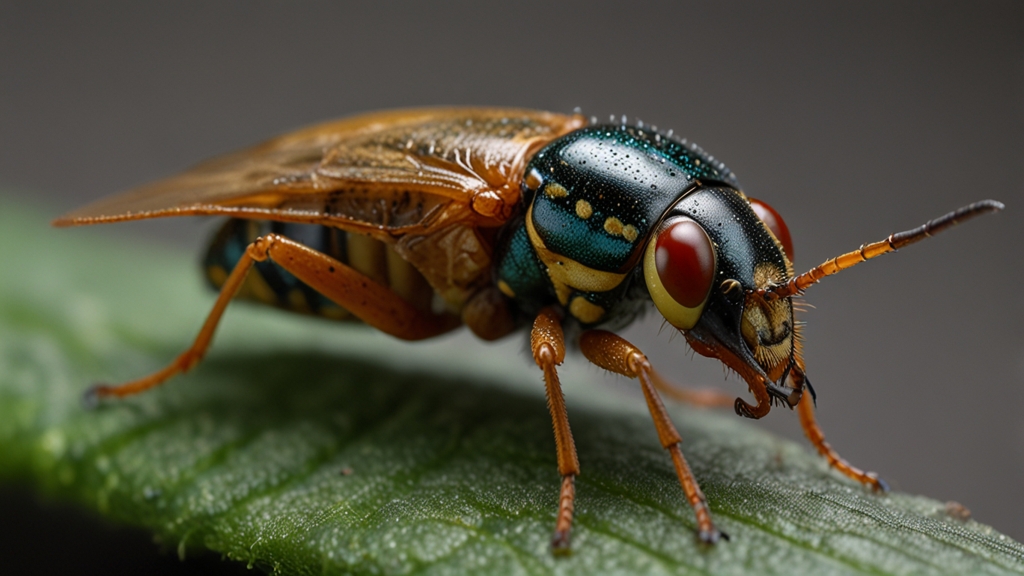Insects That Can Live Without Their Heads: Nature's Most Shocking Facts
Nature is filled with fascinating oddities and extraordinary adaptations that challenge our understanding of life. One of the most shocking revelations from the insect world is the ability of some species to live without their heads. This seemingly impossible feat raises numerous questions about how these tiny creatures manage to survive and continue various physiological processes without their most critical body part. In this article, we delve into the intriguing world of headless insects and explore the biological underpinnings of this remarkable phenomenon.
The Physiology Behind Headless Survival
Unlike mammals, insects have a decentralized nervous system that allows them to perform basic functions without the direct involvement of the brain. The insect nervous system is segmented, with ganglia – clusters of nerve cells – located in each body segment. These ganglia can independently control necessary life functions such as reflex actions, digestion, and movement.
Moreover, insects exhibit an open circulatory system, meaning their bodily fluids aren't confined to vessels as in vertebrates. Because of this, insects do not rely on a singular heart or brain to pump blood or coordinate bodily functions. Instead, they use a simple heart-like structure that moves hemolymph (insect blood) throughout the body, a process that can continue even in the absence of the head.
Examples of Headless Resilience
Numerous insect species demonstrate the capacity to live, albeit temporarily, without their head. Here are some notable examples:
Cockroaches
Cockroaches are perhaps the most infamous example when it comes to headless survival. These hardy insects can live for days, and sometimes even weeks, without their heads. As long as they avoid infections and dehydration, their decapitated bodies continue to exhibit interest in food, movement, and even mating. The breathing processes in cockroaches are managed through spiracles on their body, making oxygen intake possible without a head.
"A headless cockroach can live without its head for up to a week due to its decentralized nervous system and open circulatory system. It eventually dies from dehydration."
Praying Mantises
Praying mantises are another group of insects known for displaying continued movement post-decapitation. A mantis can carry on with basic bodily movements and even reproduction-related behaviors after losing its head. However, unlike cockroaches, their headless survival span is generally shorter.
Flies
The common housefly is another contender in the headless survival category. They have been observed to live without heads for hours or even up to two days. Headless flies can continue to react to stimuli, though their actions lack direction and purpose. Interestingly, experiments have shown that headless flies may still be capable of coordinated wing movements.
"Headless flies exhibit reflexive actions and can continue to react to environmental stimuli, showcasing their robust decentralized nervous system."
Biological Implications and Evolutionary Considerations
The ability of insects to survive without their heads points to an incredible level of biological specialization and resilience. This phenomenon underscores the significant differences between insect physiology and that of more complex organisms like mammals. It also speaks to the evolutionary pressures that have shaped the insect world, favoring adaptations that promote survival under extreme conditions.
From an evolutionary perspective, this trait might offer insects a survival advantage by allowing them to withstand predation or environmental stresses that might otherwise be fatal. However, it's essential to note that being alive does not equate to full functionality. Even with their impressive resilience, headless insects lack the cognitive capacity to forage or reproduce effectively, signaling eventual demise.
Conclusion
Insects that can live without their heads offer a captivating glimpse into the complexity and adaptability of life. While these phenomena may seem macabre or unsettling, they highlight the incredible innovations that nature drives in its relentless quest for survival. These headless wonders remind us of the diversity of life strategies and the untapped potential that lies hidden within different living organisms.









